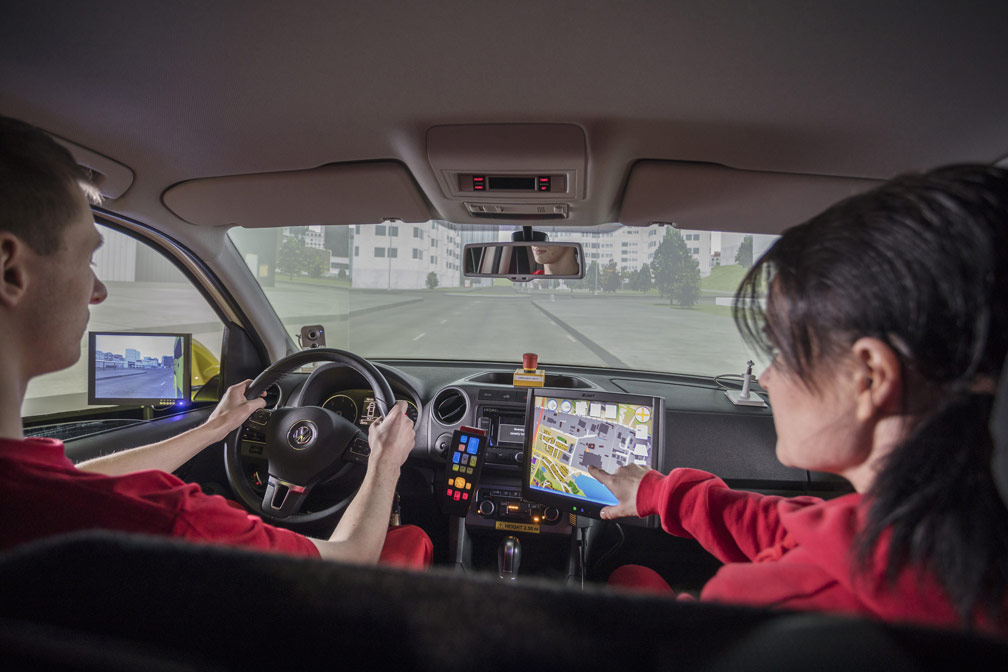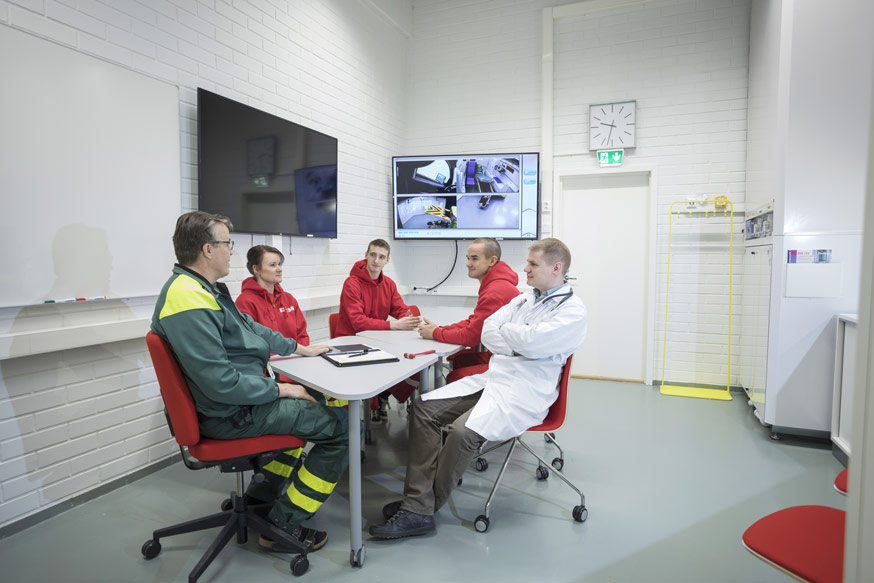Creanex was part of developing the first ambulance simulator in Finland
In May 2017 South-Eastern Finland University of Applied Sciences (XAMK) brought into use the first ambulance simulator in Finland. The simulator offers comprehensive training possibilities for emergency care in a safe and true to life learning environment. The simulation training provides XAMK students with realistic hands-on experience and prepares them for real-life situations.
The planning phase started in the spring of 2016. The goal for the ambulance simulator was to take the emergency care education to the next level and improve the safety of alarm driving. The requirements for the simulator were carefully established at the beginning of the project together with emergency care lecturer Juhani Seppälä. Creanex was responsible for the software, motion platform and connecting both to the vehicle’s control system. Simulator was built in the Volkswagen Amarok Negea, which Tamlans had modified into an ambulance. In order to make the end result as realistic as possible, the motion platform was implemented fully inside the vehicle. Thus, from the outside the simulator seems just like a normal ambulance. There is a curved 180-degree projection screen in front of the car. Seamless display with diameter of over 5 meters provides comprehensive view of the simulated environment. The vehicle’s mirrors have been implemented as their own displays. The mirrors are adjustable and they provide the driver with authentic side view. Also the rear view mirror is simulated and activates automatically when vehicle is put on a reverse.

The simulation itself consists of three separate spaces. The ambulance and room for simulated emergency situations are in the first space. The second space is the control room where the progress of the simulation can be monitored with the help of cameras and software. The third space is debriefing room where the teacher and the students can review and discuss about the simulation retrospectively.


Simulator provides ability to practice emergency care process step-by-step. By working through simulated scenarios students acquire necessary skills and are able enhance their performance effectively and in a safe way. Versatile scenarios can be created according to the teaching needs to both urban and rural environments. The simulator’s motion base allows students to feel the effects of driving at patient care. It is important for an ambulance driver to have efficient alarm driving skills that enables patient treatment in the back of the ambulance. Training real life situations helps students to get acclimated and it develops their communication and decision-making skills.

Pictures: XAMK image archive


